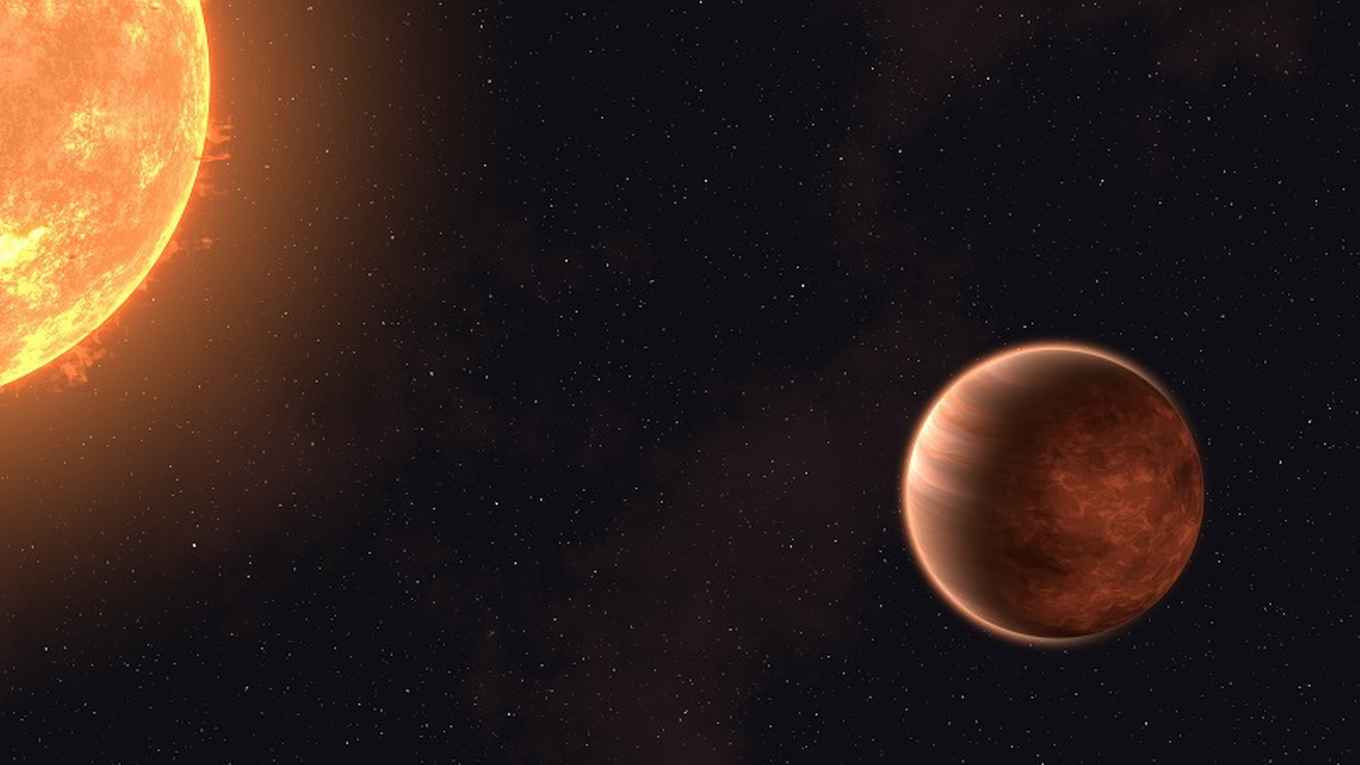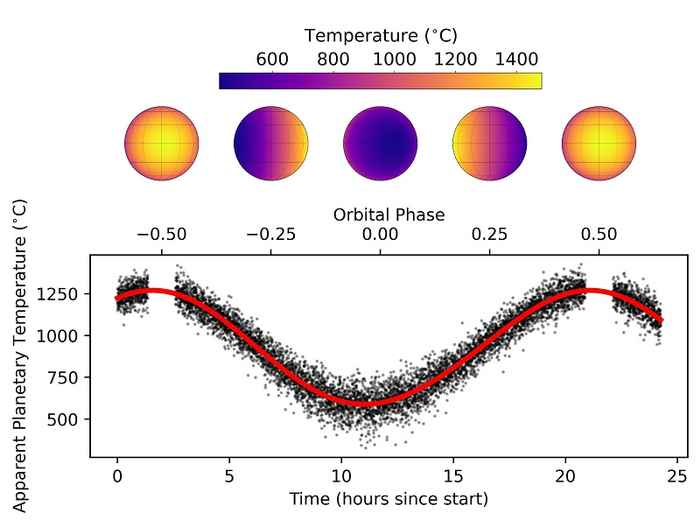Surprising: No methane on the night side of exoplanet WASP-43b
30 April 2024

The exoplanet WASP-43b is similar in size and mass to Jupiter, but it is a very different type of world. The planet orbits its star extremely close (27 times closer than the distance between Mercury and the Sun). As a result, the planet is tidally locked. This means that it is permanently day on one side and permanently night on the other. A year on the planet, that is, the time it takes to orbit its star once, lasts only about 19.5 hours.
Temperature map
Thanks to the sharp view and high stability of the MIRI instrument on the James Webb Space Telescope, the researchers were able to record the brightness of the star and planet for an entire planetary year. In that way, they could extract the very dim emission from the planet. From this, they constructed a temperature map of the planet's atmosphere.
The permanently exposed day side of WASP-43b turns out to be scorching hot at 1,250 degrees Celsius. The night side is still hot at 600 degrees, but this is cooler than expected. The astronomers explain that this is due to the presence of clouds that block radiations from deeper in the planet's atmosphere.
Water vapor everywhere
In addition to temperature, astronomers also measured the chemical composition of the planet's atmosphere. They found that water vapor is present in the atmosphere on both the day and night sides of the planet. Previous observations with the Hubble Space Telescope had found water on the day side of the planet, but the night side was too dark for Hubble.
No methane on the dark side
The team was surprised to find no methane on the night side of the planet. It was already known from the day side that no methane could form there because it is too hot. But the night side, at 600 degrees, is theoretically cool enough for methane production. The researchers propose that extreme winds with speeds of of up to 7,500 kilometers per hour race across the planet. These do not allow enough time for methane to form in detectable amounts.
This is the first time that researchers have so clearly mapped the temperature and composition of an exoplanet's atmosphere. In the future, they plan to do this for more exoplanets. Eventually, they hope to use yet-to-be-built telescopes to study the atmospheres of exoplanets that are more like Earth.
Broader view
'It's amazing that we can now probe the cold, dark side of exoplanets,' says coauthor Nicolas Crouzet (Leiden University, the Netherlands). 'That gives us a much broader view of their atmospheres and really helps understand what is going on there. We have prepared this observation for many years and we are thrilled by all we can learn from it!'
For coauthor Jean-Michel Désert (University of Amsterdam, the Netherlands) the research paper marks a culmination of anticipation and wonder. 'It's been such a journey from when we designed the phase curve observation to the breathtaking 3D map of this planet.' According to Désert studying phase curves in the mid infrared is a gateway to better understanding the energy budget of exoplanets, a fundamental criterion for atmospheres. 'So in my opinion this observation signifies a new era in our exploration of exoplanet atmospheres,' Désert concludes.
Scientific paper
Nightside clouds and disequilibrium chemistry on the hot Jupiter WASP-43b. Door: Taylor J. Bell, Nicolas Crouzet, et al. In: Nature Astronomy, 30 April 2024. [original | preprint]
